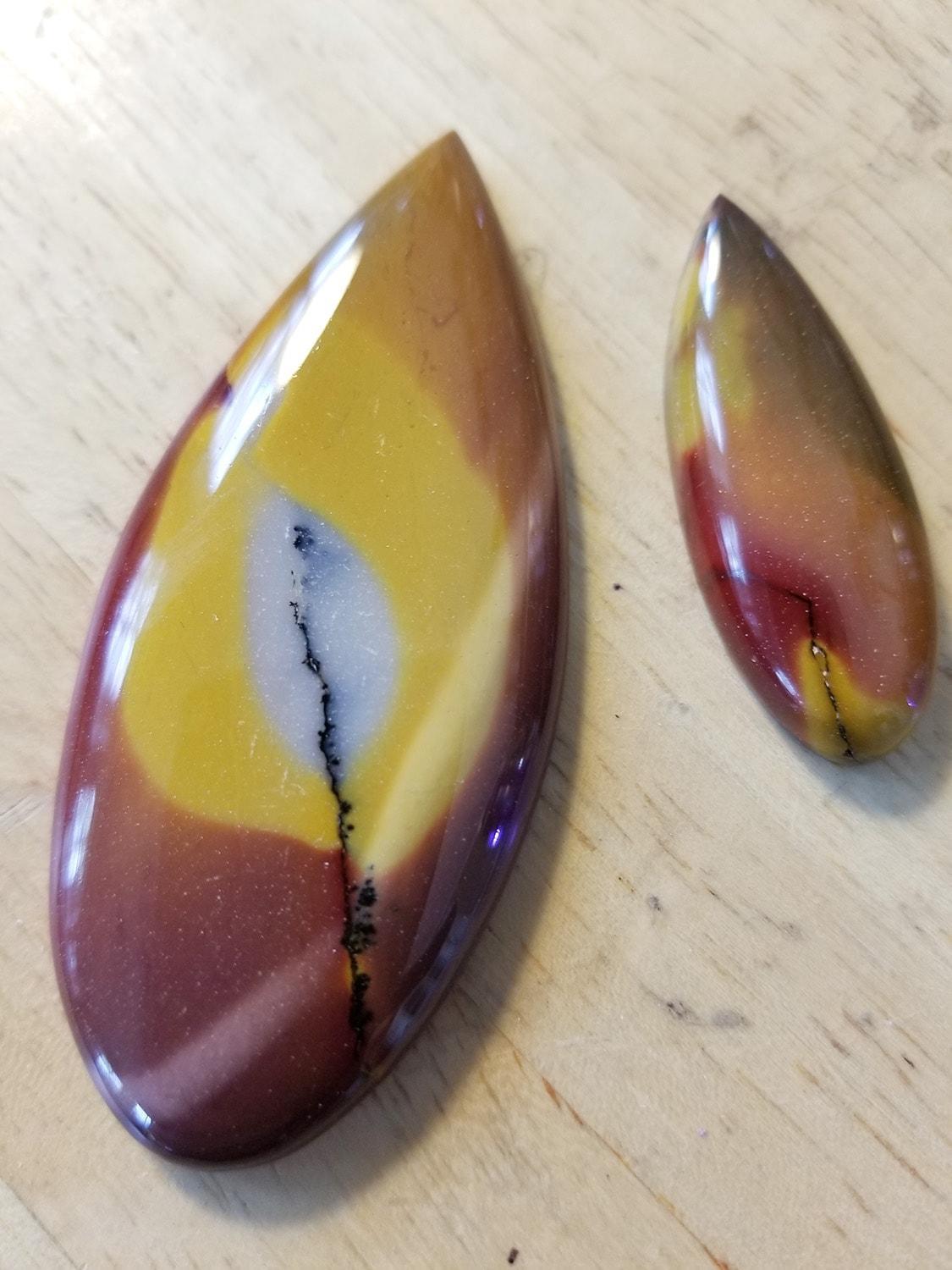Cabochons are gemstones that have been cut and polished into a smooth, domed shape. They can be made from a variety of materials, including precious or semi-precious stones, glass, and even wood. While cabochons may look simple, they require a great deal of skill to create. In this blog post, we will explore the process of how a cabochon is made.
What is the Process for Making a Cabochon?
The process for making cabochons involves several steps. The first step is to select the material to be used. I exclusively use stone, but you can use sea glass, wood or other materials. Once the material has been selected, use a stencil to mark out the desired shape on the stone. If you don’t have a stencil, you can simply draw or trace a circle, oval, or other shape on the stone. Cutting out the rough shape is typically done with a lapidary saw or grinding wheel.
The first step is to rough out the shape using a lapidary trim saw. Cut out the shape outside the edges of the shape drawn with the stencil. Using the lowest number grits on a lapidary grinder, rough out the basic shape of the cabochon. Once the cabochon has been rough cut, it must be shaped into its final form. This can be done by hand using various tools such as files, sandpaper, or a flex shaft, but is much easier with the use of a lapidary grinder with various wheels of diamond grits. The goal here is to create an even dome shape on the top of the cabochon that will catch and reflect light when viewed from different angles. Progress through the wheels on the lapidary grinder making sure to remove all the scratches before moving to the next wheel.
Finally, any inclusions or flaws in the material must be removed before it can be considered finished. This can involve anything from filling cracks with epoxy to cutting away any excess material that may have been left behind during polishing or shaping processes. Once all of these steps have been completed, the cabochon is ready for use in jewelry or other decorative items!
What Tools are Needed to Make Cabochons?
Making cabochons requires several specialized tools in order to achieve professional results. These include lapidary saws or grinding wheels for cutting and shaping materials; tumblers for polishing; files and rasps for creating an even dome shape; sandpaper for smoothing out any rough edges; and epoxy for filling inclusions or flaws in materials such as wood or glass. Additionally, some people may choose to use special polishing compounds such as cerium oxide for achieving an extra-smooth finish on their cabochons!
What Types of Materials Can Be Used To Make Cabochons?
Cabochons can be made from almost any type of material including precious stones such as diamonds and rubies; semi-precious stones like turquoise and jade; glass; wood; shell; bone; horn; ivory; ceramic; plastic; metal alloys like bronze and brass; synthetic materials like cubic zirconia (CZ); and more! Each type of material requires its own unique set of tools and techniques in order to achieve professional results when making cabochons out of them.
Creating beautiful cabochons requires skillful craftsmanship as well as specialized tools and techniques depending on what type of material you are working with. With patience and practice (and lots of equipment and patience) anyone can learn how to make stunning pieces that will last a lifetime!


